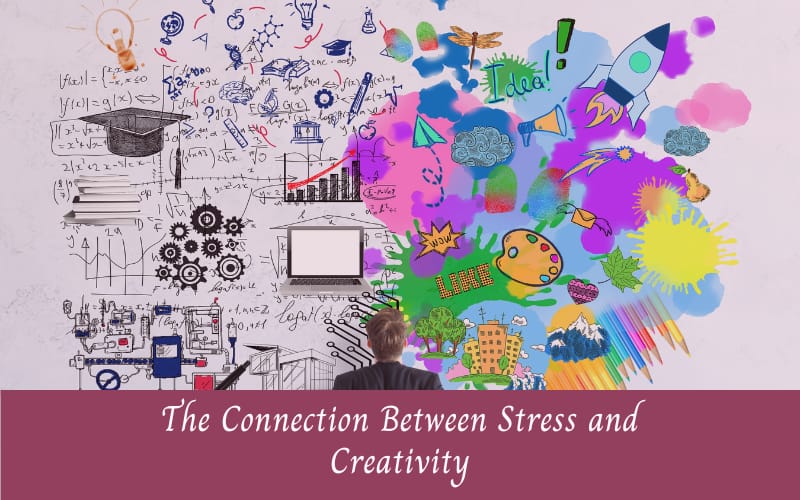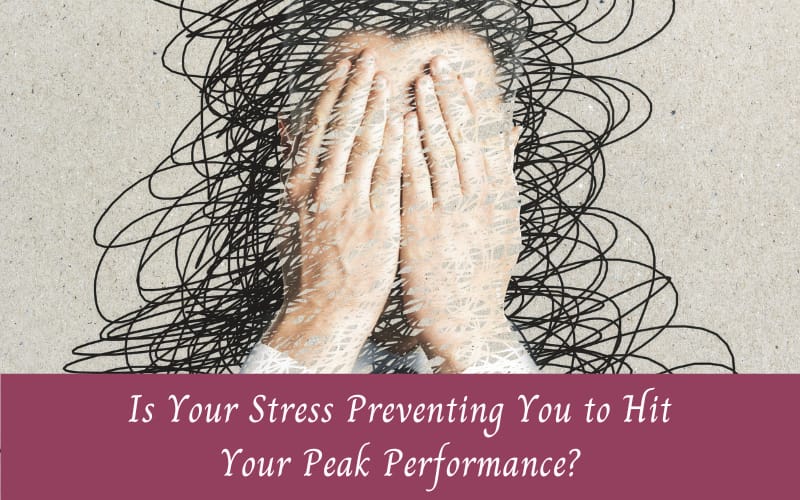
by Annika Sorensen | | Stress
Imagine stepping into the fast-paced world of business leadership, where stress isn’t just an obstacle but a lively companion in the journey of creativity. It’s like navigating a maze of challenges and opportunities. Our mission? To uncover the intricate bond between stress and creativity within teams led by high-achieving business leaders. Think of it as embarking on an adventure to understand how stress and innovation tango together in a way that’s both intriguing and personal.
Now, why is it crucial to unravel this dance? Understanding how stress and innovation intertwine is akin to holding the key to unlocking the untapped potential within teams. It’s not just about managing stress; it’s about leveraging it as a powerful force for creative thinking. When leaders grasp this connection, they gain a compass to navigate high-pressure situations, transforming stress from a mere challenge into a strategic ally in fostering groundbreaking ideas and solutions. In essence, it’s about turning a potential stumbling block into a stepping stone for innovation.
The Dual Nature: Positive Stress vs Negative Stress Impact on Creative Thinking
Imagine stress as the protagonist in the story of creativity, playing a dual role that often goes unnoticed. On one side of the stage, we have positive stress, the unsung hero that propels creative thinking to new heights – it’s the adrenaline rush before a breakthrough. Now, shift your focus to the other side, where negative stress lurks in the shadows, acting as the silent antagonist, stifling the very innovation it aims to nurture. It’s the roadblock to creativity.
This section is like opening a treasure chest of insights into this dual nature. It’s about understanding the secrets of how the right amount of stress can act as a magical potion, fueling creativity, while excessive stress becomes a formidable barrier to innovation. Imagine holding a compass that guides leaders through this terrain, helping them recognize when stress is a motivational coach, pushing creative boundaries, and when it transforms into an unruly adversary, hindering the very innovation it intends to foster. By mastering this delicate balance, leaders can turn stress from a mere pressure point into a strategic tool for unlocking the full creative potential of their teams. It’s about making stress a collaborator, not a hindrance, in the pursuit of innovation.
The Neuroscience of Creativity under Stress
Let’s take a closer look at what happens inside the brain when creativity meets stress. Imagine it as peeking behind the scenes to understand the magic. We’re demystifying the intricate dance between stress hormones and how our brains work when we’re feeling the pressure. It’s like exploring the hidden gears that power the brain’s creative engine.
Why does this matter? Understanding the neuroscience of creativity under stress is like having a special pass to see how our brains create innovative thoughts. It gives leaders valuable insights into how stress affects our thinking and shapes the process of coming up with new ideas. It’s not just knowing that stress has an impact; it’s about understanding the details of how stress can either boost or hinder our ability to think creatively. With this knowledge, leaders can navigate the connection between stress and creativity with a clear understanding, turning the brain’s complex dance into a harmonious symphony of innovation.
Strategies for Harnessing Stress for Creativity
Now, let’s roll up our sleeves and get practical with specific strategies. Picture stress as a spirited horse, and business leaders as skilled riders. Here are tangible steps, a toolkit of real strategies to transform stress from a potential roadblock into a catalyst for creativity:
- Encourage a Shift in Mindset: Foster a workplace culture that views stress as a natural part of the creative process rather than a hurdle.
- Introduce Meditation and Deep Breathing Techniques: Incorporate mindfulness practices like meditation and deep breathing to cultivate a focused and calm mindset amid challenging situations.
- Embrace “Downtime”: Recognize the importance of downtime. Breaks allow the mind to recharge, promoting a more conducive environment for creative thinking.
- Share Ideas: Create an environment where ideas are openly exchanged, and decisions are made collectively. This not only distributes the stress load but also fosters a culture of shared responsibility.
- Boundaries, Boundaries…: Help team members delineate between work and personal life. Setting clear boundaries contributes to a healthier work environment and prevents burnout.
- Learning never stops: Continuous learning can be a powerful stress reliever. Offer opportunities for skill development and growth within the organization.
These strategies aren’t just theoretical concepts; they’re actionable steps that empower leaders like you to actively use stress as a tool for driving innovation within teams.
It’s about getting equipped with a practical roadmap to not just manage but leverage stress for creative breakthroughs.
Lessons From The Visionaries
Ever wondered what the masterminds behind some of the most successful companies have to say about navigating stress and fostering creativity?
Step into the world of industry titans like Elon Musk, Steve Jobs, and Oprah Winfrey, and discover the secrets they’ve shared on successfully managing stress while unleashing creativity.
1) Elon Musk – The Mars Mission Maestro:
When we think of stress and innovation, Elon Musk stands out as a prime example. Amidst the immense pressure of launching revolutionary ventures like SpaceX and Tesla, Musk not only embraced stress but leveraged it for creative breakthroughs. Take the scenario of SpaceX’s early days when financial struggles and technical setbacks threatened the mission. Musk’s unwavering commitment and innovative problem-solving turned SpaceX into a trailblazer in the space industry.
2) Steve Jobs – The Apple Visionary:
Steve Jobs, the co-founder of Apple, is another luminary who navigated stress with unparalleled creativity. During the development of the iPhone, Jobs faced intense pressure and tight deadlines. Instead of succumbing to stress, he channeled it into a relentless pursuit of perfection. The result? A revolutionary product that transformed the tech industry and our daily lives.
3) Oprah Winfrey – The Media Mogul:
Oprah Winfrey, a media mogul, faced numerous challenges throughout her career. One notable instance is when she launched her television network, OWN. Despite initial setbacks and financial strains, Winfrey’s resilience and creative problem-solving turned the situation around. OWN became a platform for empowering and inspiring stories, showcasing how stress can be a catalyst for innovative content.
You Have A Backstage Pass
These aren’t just tales of triumph; they’re a backstage pass to the strategies employed by visionaries who turned high-stress situations into breeding grounds for innovation.
These real-world narratives illustrate how successful individuals have not only faced high-stress situations but have also used stress as a driving force for innovation.
By studying these examples, leaders like you can gain valuable insights into how to effectively navigate challenges and foster a creative environment within your teams. It’s about turning the experiences of visionaries into actionable lessons for harnessing stress in the pursuit of groundbreaking creativity.
After all…
Stress Isn’t Just A Deceptive Force.
It’s a dynamic catalyst for innovation, and by successfully understanding the delicate balance between positive and negative stress, decoding the neuroscience of creativity under pressure, and implementing practical strategies, high-achieving leaders can redefine the narrative!
The paradigm shift encourages leaders to embrace it as a potent force for creativity. By doing so, we not only elevate individual and team performance but also pave the way for a culture of innovation within organizations.
So, if you’re still navigating the intricate dance between stress and creativity, remember: it’s not about avoiding stress but about mastering its rhythm, or turning the pressure into a source of inspiration.
And in doing so, redefining the very essence of creativity in business leadership.
Finally one day…Stress transforms from a foe into YOUR ally.
To embracing stress as your motivator,


by Annika Sorensen | | Stress
In the fast-paced world of leadership, executives, CEOs, and business managers often grapple with high-functioning anxiety—a paradox where success is accompanied by constant stress, self-doubt, and pressure to perform. While high-functioning individuals may appear confident and accomplished, the persistent inner turmoil can impact decision-making, productivity, and overall well-being.
Understanding and addressing high-functioning anxiety is crucial for maintaining sustainable success without compromising mental health. Let’s explore how this hidden struggle affects high-achievers and practical strategies to regain control.
High-Functioning Anxiety in Executives: The Hidden Cost of Success
Executives are driven by ambition, resilience, and an unrelenting pursuit of excellence. However, the very qualities that propel them forward can also fuel high-functioning anxiety—the persistent worry, over-analysis, and self-imposed pressure that comes with leadership responsibilities.
Many high-achievers experience:
- Overthinking decisions, leading to decision fatigue
- A constant need to prove their worth through achievements
- Fear of failure despite a track record of success
- Physical symptoms like tension headaches, poor sleep, and digestive issues
The irony? Anxiety-driven leaders often appear calm, collected, and highly capable, making it difficult for others (and even themselves) to recognize the problem.
Perfectionism: The Double-Edged Sword
Executives often pride themselves on attention to detail and high standards. While these traits drive excellence, perfectionism can lead to:
- Fear of delegation, causing excessive workload
- Procrastination due to fear of falling short
- Difficulty celebrating wins because success never feels “enough”
Balancing ambition with self-compassion is key to preventing high-functioning anxiety from turning into chronic stress and burnout.
Strategies for Managing High-Functioning Anxiety in Leadership
1. Redefine Success Beyond Productivity
Executives often tie their self-worth to productivity. However, sustainable leadership requires redefining success beyond constant output.
Action Steps:
- Set realistic goals that focus on impact, not just effort
- Recognize progress instead of chasing unattainable perfection
- Separate personal identity from work achievements
2. Establish Boundaries to Avoid Burnout
Blurring the line between work and personal life intensifies anxiety. High-functioning leaders must proactively set boundaries to protect their well-being.
Action Steps:
- Designate specific work hours and stick to them
- Schedule non-negotiable downtime for mental reset
- Limit after-hours email checking to avoid work creep
3. Leverage Delegation as a Strength
Micromanagement and reluctance to delegate fuel high-functioning anxiety. Effective leaders understand that delegation is not a sign of weakness but a strategic necessity.
Action Steps:
- Trust capable team members to handle tasks
- Focus on high-level strategy instead of daily minutiae
- Empower employees to take ownership of responsibilities
4. Implement Mindfulness and Stress-Reduction Techniques
Mindfulness helps executives stay present, reduce overthinking, and manage stress effectively.
Action Steps:
- Incorporate short meditation or deep-breathing exercises into daily routines
- Use time-blocking to focus on one task at a time
- Practice gratitude to shift focus from anxiety to accomplishments
5. Seek Professional Guidance and Peer Support
Despite their high-functioning nature, executives benefit from professional support to navigate stress and anxiety.
Action Steps:
- Engage with executive coaches or therapists specializing in leadership stress
- Join peer advisory groups for shared insights and problem-solving
- Foster a culture where mental health discussions are normalized
Thriving with High-Functioning Anxiety: The Executive’s Roadmap to Resilience
Executives don’t need to choose between success and well-being. By recognizing and managing high-functioning anxiety, high-achievers can maintain peak performance while safeguarding their mental health.
Adopting proactive strategies—such as setting boundaries, embracing mindfulness, and redefining success—empowers leaders to excel without succumbing to chronic stress.
If you’re an executive navigating high-functioning anxiety, take the first step by prioritizing mental resilience. Sustainable success starts with a balanced mind.


by Annika Sorensen | | Stress
Ever feel like you’re juggling a mountain of responsibilities, and the stress just seems to hit its highest point? You’re not alone!
Stress, the unwelcome companion of daily lives, especially as a modern leader, can either be a stumbling block or a stepping stone… but it’s up to you to decide which one you want it to be.
In this blog, we will unravel practical strategies for leaders to not just endure but thrive amidst the chaos.
Work-Life Balance
The sweet melody of work-life balance… a rhythm that orchestrates not just professional success, but the very essence of a fulfilled life.
Imagine being a leader not just thriving in the boardroom but also savoring the precious moments outside it. It’s more than a luxury; it’s the soulful experience that transforms leadership from a demanding pursuit to a flourishing journey and a necessity for sustained well-being.
Leaders often find themselves caught in the whirlwind of responsibilities, but remember, a harmonious life outside work positively influences your effectiveness within it.
Work-life balance harmonizes your relationships, both personal and professional. Plus, it keeps you mentally healthy and on the other hand, without it, you’re always close to burnout.
Finding the Balance Between Work and Life
But really, work and life are hard enough already to balance even when you’re not yet in a leadership position…
So, how do we really achieve one?
Strategies for Leaders
- Importance of schedule: We know how there are unexpected times, but as much as possible, unless it is really an emergency and cannot be delayed at all, schedule dedicated personal time in your calendar, treat it as non-negotiable and communicate this boundary to your team.
A well-rested and fulfilled leader fosters a more productive work environment.
- Mindfulness: This is not just a trend, but a game changer. This empowers anybody to “stay and focus” at the present moment to make better decisions, avoid over-analysis, and manage stress more effectively.
A few minutes of focused breathing can set a calmer tone, enhancing collective focus and decision-making.
- A Supportive Organizational Culture: A workplace’s culture significantly influences the stress levels of its leaders and team members. Fostering a supportive culture that values well-being creates a resilient team.
To start with, establish open communication channels with regular check-ins, feedback sessions, and forums for sharing challenges to create an environment where stress is acknowledged and collectively addressed. Do not forget to celebrate wins and acknowledge everyone’s efforts too!
- Stress-Resilient Leadership Training: Just as athletes train to build physical resilience, leaders can undergo training to enhance stress resilience.
Equip yourself with the skills to navigate challenges without compromising your own well-being. Invest in leadership training programs that focus on stress management, emotional intelligence, and adaptive problem-solving.
A resilient leader inspires a resilient team.
“It’s not the load that breaks you down, it’s the way you carry it.”
Lou Holtz
Beware of Technology
While technology enhances efficiency, its unchecked use can contribute to stress.
Balancing the benefits of technology with mindful consumption is crucial, responsible use is a must.
What you can do, is to set ground rules for yourself to follow, such as establishing a technology-free zone or hours during the day. You can also share this with your team at work, maybe a zone dedicated to brainstorming sessions can make a tech-free zone, or maybe the brainstorming session itself is the tech-hour time of the day.
I know how helpful the internet is, so having an agenda for a meeting is important beforehand, so everyone can have their prepared gathered materials enough to spark creativity and enough to brainstorm ideas.
Plus, it encourages more engaged conversations too – that could help in fostering deeper and healthier connections.
DIVE DEEPER
If you want to dive or delve deeper into well-being practices for leaders, feel free to get a copy of my free guide for more actionable steps in stress-less leadership.
To a leadership journey that resonates with your well-being,


by Annika Sorensen | | Stress
In the whirlwind of today’s global business, stress wears different cultural hats. Think of it like a secret key to unlock top-notch leadership in diverse teams.
Ready for a colorful journey through the stressful landscape and how different cultures spice up the story? Explore with me the different leadership challenges brought by these cultural nuances, and get equipped with an actionable strategy for each!
Understanding Leadership Styles Across Cultures
Ever noticed how every culture adds its unique thread to leadership styles? It totally affects how we see and handle stress.
Leaders, picture this: you’re the captain navigating these differences. Whether you’re all about collaboration or follow a more structured approach, the goal is a stress-resilient team.
Conducting a stress-resilient team is not easy, as a team is made up of different people with different individuality, and different cultures and beliefs. But the best and most effective first step to achieving your goal is…
Host a workshop where team members can get to know more about each other on a deeper level and share their preferred work styles.
Then you may after use this insight to create a leadership approach that blends these diverse styles, making stress more manageable!
Communication Challenges in Multicultural Teams
So we already know how you’ve got a team with people from all walks of life. This also means… communication is the magic bridge, or sometimes a gap as it can be a bit wonky.
Stress levels skyrocket when language nuances and different communication styles clash.
So… what’s the trick?
Recognize and bridge these gaps for top-notch teamwork and stress-busting!
Or in simple words….
- Establish a Communication Code!
Work with your team to create a communication code that respects different styles. It could be as simple as using emojis for tone or having a weekly catch-up to discuss any communication hiccups.
Always remember to keep conversations open, honest, and progressive to avoid counter-productivity.
Cultural Norms and Stress Coping
Cultural norms are like the GPS guiding how we handle stress. Some cultures are all about community support, while others are more into individual coping styles.
Here’s the secret sauce: understand and respect these differences for a workplace where everyone feels supported in their stressful journey.
Plus…
- Implement a Buddy System!
Pair team members from different cultural backgrounds as stress buddies. They can then share coping mechanisms, fostering a supportive environment that respects and embraces diverse stress approaches.
Impact of Global Events on Stress Levels
Newsflash: global events shake things up and create a unique stress cocktail.
Economic shifts, world events, or health crises – it’s like a global stress party.
Leaders, your mission is to be the DJ, blending cultural sensitivity into the mix… This keeps the unity vibe strong amid diverse stress responses.
So as their DJ, you can…
- Host a Global Stress Check-In!
Regularly check in with your team about global events. Provide a safe space for discussions and ensure that everyone feels heard. This not only acknowledges cultural variations but also builds a resilient team that faces challenges together.
Ever experienced being at the foot of a global event but instead of hearing co-workers ask how you are, start reminding you about the deadlines you’re missing? You get it.
Cultural Intelligence as a Stress Management Superpower
Ever wished for a stress management superpower? Enter cultural intelligence!
It’s not just about understanding different cultures. It’s like turning that knowledge into a superhero cape, creating an inclusive and supportive space where stress doesn’t stand a chance.
But how can a leader get one?
- Through Cultural Training Sessions!
Invest in cultural training sessions for your team. Equip them with tools to navigate cultural differences effectively, turning stress into an opportunity for growth.
AND ALWAYS REMEMBER…
As we dive into the cultural aspects of stress, leadership becomes this epic quest. It’s about understanding the nuances, celebrating diversity, and leading with superhero empathy across your global team.
Ready for this cultural journey of leadership awesomeness? Check out my ultimate guide on stress, leadership, and turning your team into a global powerhouse.
To stress-resilient leadership and a world of cultural understanding,


by Annika Sorensen | | Stress
In the fast-paced world of hectic schedules and demanding responsibilities, stress often accompanies us like an unwelcome shadow.
But there is actually a transformative way to address this stress, something involving the intriguing connection between stress and “gut health”.
So here, I’ll tell you about the fascinating world of “Stress and Gut Microbiota.”
Navigating the Gut-Brain Connection
Simply put, our bodies are like networks, and in every network, there’s always a form of communication.
If our body is a network, then constant communication is also present – and that’s how it works between our brain and gut health. Our brains basically engage in constant communication with our guts.
But how does this connection happen?
That’s where our “gut microbiota” comes in — or the tiny organisms living in our digestive system which surprisingly, play a pivotal role in how our bodies respond to stress.
Stress and its Ripple Effect on Gut Microbiota
When stress comes running, it doesn’t just affect your mental state.
It automatically sends ripples of effect through your entire body, and through your gut microbiota as well.
Now these microorganisms, just like everything in our body, require balance. But as all delicate balances, these microorganisms can also be disrupted – potentially leading to digestive issues and a compromised immune system. Nasty, right? But that’s just how our bodies work.
Understanding How It Works
While there’s nothing we can do about the natural biology of our body, we can definitely work on understanding how they work.
Understanding the connection between stress and our gut microbiota allows us to grasp the profound impact stress can have on our overall well-being.
So how do we begin?
WE TAKE GOOD CARE OF OUR GUT.
Fueling Resilience: Nutrition for a Stress-Resistant Gut
How do we make sure our guts are healthy?
NUTRIENT-RICH DIET.
Yes, consider your diet a powerful ally in the battle against stress.
Opting for a nutrient-rich, balanced diet is like providing your gut microbiota with the tools to maintain harmony in the face of stress.
Whole foods, rich in fiber, vitamins, and minerals… they act as a buffer, enhancing your body’s ability to cope with stressors.
Probiotics: Guardians of Stress Resilience
Aside from a nutrient-rich diet, probiotics also play their role!
Probiotics are basically the unsung heroes in the realm of stress management.
Probiotics, or the beneficial bacteria found in fermented foods or supplements, contribute to the resilience of your gut microbiota!
By fostering a diverse and robust microbial community, probiotics can aid in maintaining equilibrium even during stressful times.
So make sure that aside from having a nutrient-rich diet, you throw on some probiotics too!
Holistic Approaches to Nurture Both Mind and Gut
What about the holistic approaches?
When aiming for holistic well-being, it’s crucial to approach stress management from MULTIPLE ANGLES.
Incorporating stress-relief practices like (a) mindfulness, (b) adequate sleep, and (c) regular physical activity contributes not only to mental resilience but also supports a flourishing gut microbiota.
These holistic measures create a harmonious environment for both your mind and your gut.
Importance of Understanding
In your journey towards balanced well-being, remember that understanding the interplay between stress and gut microbiota equips you with valuable insights.
By embracing a lifestyle that nurtures both mental health and gut resilience, you pave the way for a healthier, more resilient you.
Curious to delve deeper into stress management and gut health? Explore my step-by-step guide for additional insights on fostering well-being from within.
To a harmonious mind and a resilient gut,







